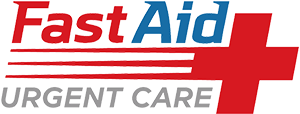The patient has the free choice of the structure where he will receive care, subject to the existing proximity offer and the opinion of his doctor. The latter has his network of surgeons whom he trusts. Word of mouth or hospital ranking publications can also guide the patient in their choice. Once the patient has chosen the facility where he will be operated, appointments follow one another. You can go here and come up with the perfect options there.
Several preoperative consultations
The procedure is usually preceded by several preoperative consultations, with the surgeon and the anesthesiologist. The latter will choose the type of sleep (general, locoregional, epidural). This is an opportunity to ask questions.
The morning of the operation, the pre-anesthetic visit makes it possible to verify that the patient is fasting and that no obstacle interferes with the intervention (fever, infection). The patient discovers the anesthetist on call, who is not necessarily the one he has met previously.

The admissions office of the hospital: a must
Before a hospitalization, the patient must go to the admissions office with a certain number of justifications, to benefit from coverage of Medicare, then the complementary health.
The patient must go to the admissions office with the following papers:
The Vital Card (remember to update it) and the Social Security paper certificate or the state medical aid. If you do not have a Vitale card, you will have to provide your last payslip if you are an employee, your certificate if you are a job seeker, your retirement pension if you are retired, etc.
- An identity document or residence card;
- A recent proof of address
- The card or the complementary health certificate;
- The introductory letter from the referring doctor who validates the care path;
- Possibly the accident sheet of work.
Then, the admissions department gives him:
- A situation or hospitalization report, acting as a work stoppage, which must be sent within 48 hours to the employer or to the employment center and to the primary fund that pays the daily sickness benefits;
- A nomination form indicating the person of trust who will accompany him and, if necessary, make the decisions in his place;
- A welcome booklet.
Patients without social coverage must request the support of the social worker at the office of entry. It will help them obtain a certificate of emergency admission to basic universal health coverage (CMU) or state medical aid for undocumented migrants.
Patients with insufficient resources must apply for complementary CMU or support for the health and social action of their primary fund. Once the formalities have been completed, the patient is given various papers, including the welcome booklet. Do not forget to bring you useful medical information, even old ones: exam results, prescriptions, X-rays, blood group card, etc.
The welcome booklet at the hospital: a wealth of information
Concerned about his state of health, the patient does not always see the usefulness of the welcome booklet. Yet this is where the unit of care is presented. The rules of life in community are recalled: visits, noises, personal hygiene, etc.
It also contains the main points of the Hospitalized Patient’s Charter, which lists patients’ rights: right to access and quality of care, right to be informed and to participate in medical decisions, access to the medical file, medical confidentiality, protection of the privacy and integrity of the person, right of expression and appeal, right to leave the establishment after signing a release.

